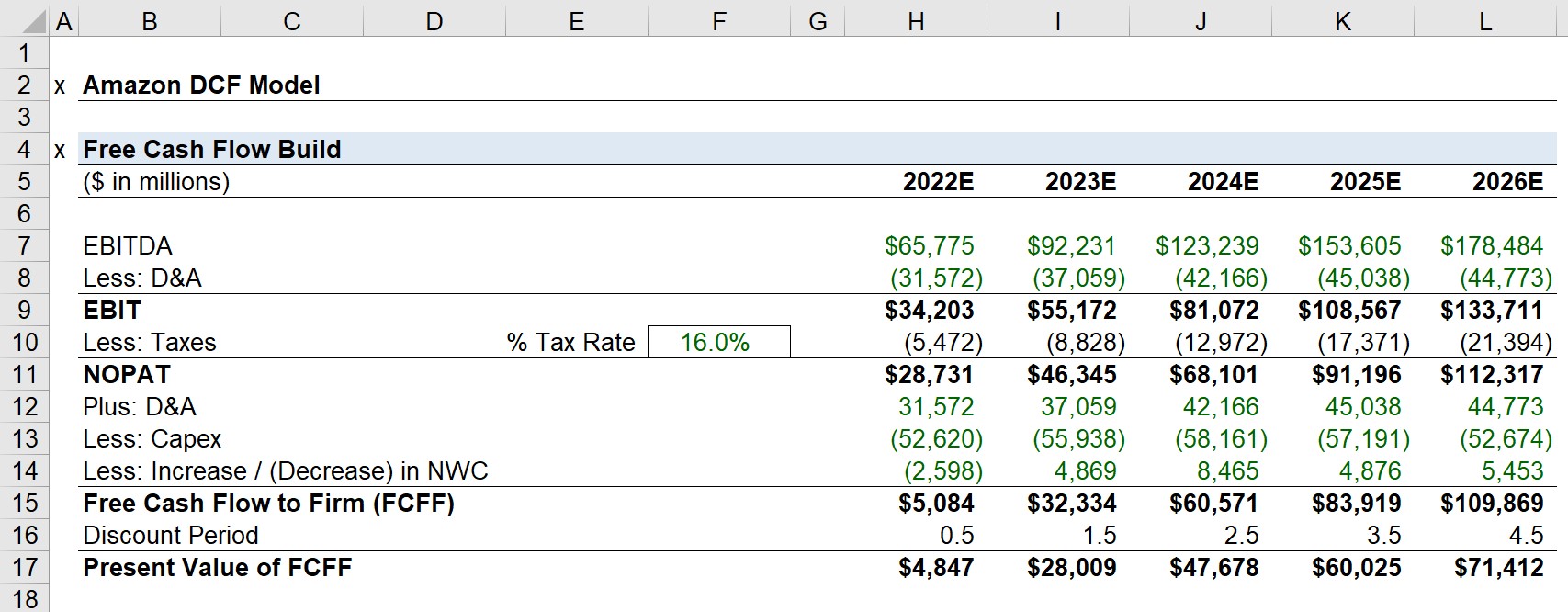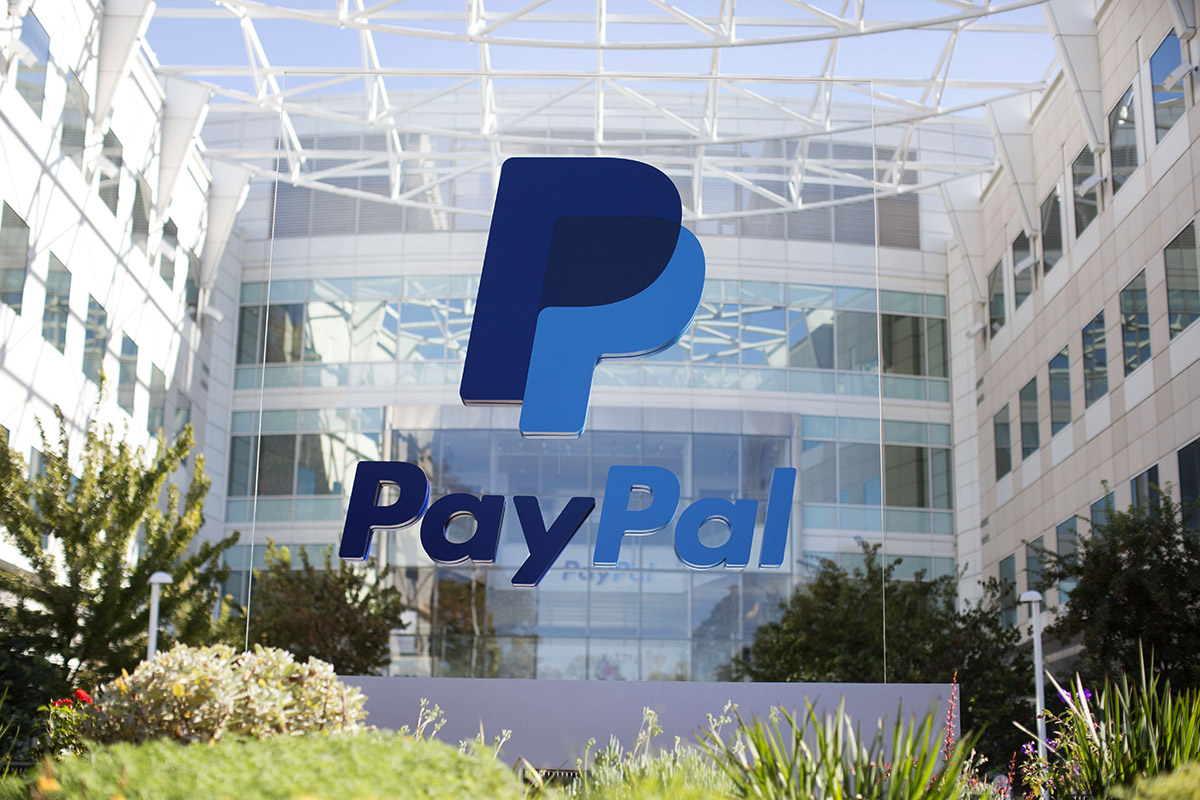

Finance
What Is The Capital Structure?
Published: December 24, 2023
Understand the concept of capital structure in finance and its importance for businesses. Learn how it influences financial decisions and impacts a company's risk and profitability.
(Many of the links in this article redirect to a specific reviewed product. Your purchase of these products through affiliate links helps to generate commission for LiveWell, at no extra cost. Learn more)
Table of Contents
Introduction
Welcome to the world of finance, where capital structure plays a vital role in shaping the financial health and stability of companies. Whether you are a business owner, investor, or finance enthusiast, understanding the concept of capital structure is crucial for making informed decisions and maximizing returns.
In simple terms, capital structure refers to the way a company finances its operations and growth through a combination of debt and equity. It represents the mix of long-term debt, short-term debt, preferred equity, and common equity that make up a company’s total capitalization.
The capital structure decision is critical as it directly impacts a company’s financial risk, cost of capital, and ability to raise funds. A well-designed capital structure can enhance a firm’s value and attract investors, while an inappropriate one can lead to financial instability and hinder growth prospects.
Throughout this article, we will explore the key components of capital structure, its importance, factors influencing it, different types of capital structures, their advantages and disadvantages, and the process of determining the optimal capital structure.
Understanding these concepts will empower you to make informed financial decisions, evaluate investment opportunities, and navigate the complexities of the business world.
Definition of Capital Structure
The capital structure of a company refers to the composition of its financial resources, including the mix of debt and equity used to finance its operations and investments. It represents the way a company raises funds from different sources to fulfill its capital requirements.
When it comes to capital structure, there are two primary sources of financing: debt and equity.
Debt: Debt represents funds borrowed by the company from lenders such as banks, financial institutions, or bondholders. This form of financing requires the company to make regular interest payments and repay the principal amount over a specified period. Debt can take the form of long-term loans, bonds, or short-term credit lines.
Equity: Equity represents the ownership stake or interest in a company held by its shareholders. Equity financing is obtained by issuing shares of the company’s stock to investors. Unlike debt, equity does not require regular interest payments or repayment of principal. Instead, shareholders participate in the company’s profits through dividends and potential capital appreciation.
The capital structure of a company is typically expressed as a debt-to-equity ratio, which compares the amount of debt to the amount of equity. It provides insights into the proportion of a company’s financing that comes from debt compared to equity.
For example, if a company has a debt-to-equity ratio of 1:1, it means that the company has an equal amount of debt and equity financing. A higher debt-to-equity ratio indicates a higher proportion of debt in the capital structure, while a lower ratio indicates a larger share of equity.
It is important to note that the capital structure can vary from industry to industry and from company to company based on various factors, such as the company’s growth stage, risk appetite, profitability, and access to capital markets.
By configuring an optimal capital structure, companies aim to strike a balance between the cost of capital and financial risk, ultimately maximizing shareholder value and ensuring the long-term sustainability of the business.
Importance of Capital Structure
The capital structure of a company holds significant importance due to its impact on various aspects of the business. Let’s explore some key reasons why capital structure matters:
1. Cost of Capital: The capital structure directly influences the cost of capital for a company. The cost of capital is the average rate of return required by investors to provide funds to the company. Utilizing an appropriate mix of debt and equity can help minimize the overall cost of capital, as debt typically has a lower cost of capital compared to equity. By optimizing the capital structure, a company can lower its financing costs and maximize profitability.
2. Financial Risk: Capital structure significantly impacts a company’s financial risk. Higher levels of debt in the capital structure increase the financial risk as it requires regular interest payments and principal repayments, regardless of the company’s performance. On the other hand, a higher proportion of equity financing reduces the financial risk as equity investors share in the profits and losses. Striking the right balance between debt and equity can help manage the financial risk effectively.
3. Flexibility and Liquidity: The capital structure can provide companies with flexibility and liquidity. Having access to different sources of financing, such as lines of credit or issuing bonds, can enable companies to fund their operations, invest in growth opportunities, and navigate through challenging economic periods. By maintaining an optimal capital structure, companies can ensure they have the financial resources to support their strategic initiatives.
4. Investor Perception: The capital structure of a company affects how it is perceived by investors and the market. Investors analyze the capital structure to assess the financial health and stability of a company. A well-balanced capital structure can instill confidence in investors, attracting them to invest in the company’s stock or bonds. Conversely, an unfavorable or risky capital structure may discourage investors and impact a company’s ability to raise capital.
5. Growth and Expansion: Adequate capital structure plays a crucial role in supporting a company’s growth and expansion plans. Whether it’s through reinvesting profits, taking on debt to fund acquisitions, or issuing equity to raise capital, a well-designed capital structure provides the financial means to pursue growth opportunities and enhance market position.
Overall, the capital structure is a critical aspect of financial management and strategic decision-making. Companies must carefully analyze and optimize their capital structure to balance the cost of capital, financial risk, and growth objectives, ultimately maximizing shareholder value and ensuring sustainable long-term success.
Factors Influencing Capital Structure
The capital structure of a company is influenced by various internal and external factors. These factors play a crucial role in determining the optimal mix of debt and equity financing. Let’s explore some key factors that influence a company’s capital structure:
1. Business Risk: The level of business risk a company faces can impact its capital structure decisions. If a company operates in a highly volatile or cyclical industry, there may be a higher perceived risk that could lead to a conservative capital structure with a lower proportion of debt. Conversely, if a company operates in a stable and predictable industry, it may be more comfortable taking on higher levels of debt in its capital structure.
2. Profitability: The profitability of a company also affects its capital structure. Highly profitable companies may have more flexibility to use retained earnings to fund growth initiatives, reducing the need to rely heavily on external financing. On the other hand, less profitable companies may have to rely more on debt financing to meet their capital requirements.
3. Growth Opportunities: The growth prospects and opportunities available to a company are crucial considerations in capital structure decisions. Companies with significant growth potential may choose to finance their expansion through equity financing, enabling them to retain ownership and benefit from future growth. Conversely, companies with limited growth opportunities may rely more on debt financing to fund their operations.
4. Industry Norms and Regulations: Industry norms and regulations can influence a company’s capital structure. Some industries have specific regulations and restrictions on the proportion of debt that companies can use in their capital structure. Additionally, studying the capital structure of competitors within the industry can provide insights into the appropriate mix of debt and equity for a company.
5. Market Conditions: The prevailing market conditions, such as interest rates, investor sentiment, and access to capital markets, can impact a company’s capital structure decision. In times of low interest rates, companies may find it more attractive to take on debt due to lower borrowing costs. Likewise, during periods of economic uncertainty, companies may choose to have a more conservative capital structure to mitigate potential risks.
6. Company Size and Life Cycle: The size and life cycle stage of a company can influence its capital structure. Startups and small companies typically rely more on equity financing, as they may have limited access to debt and the need to attract investors. As companies grow and establish a track record, they may have more access to debt financing, enabling them to optimize their capital structure.
It’s important to note that these factors are interrelated and must be carefully evaluated by companies to determine the most appropriate capital structure for their specific circumstances. By considering these factors, companies can make informed decisions that align with their financial goals and risk tolerance.
Types of Capital Structure
Companies have various options when it comes to structuring their capital. The choice of capital structure depends on factors such as the company’s financial goals, risk appetite, and industry norms. Let’s explore some common types of capital structure:
1. Equity Financing: In this type of capital structure, companies rely primarily on equity to finance their operations and investments. Equity financing involves issuing shares of stock to investors in exchange for capital. Companies that opt for equity financing have no obligation to make interest payments or repay the principal. Instead, shareholders become co-owners of the company and participate in its profits through dividends and capital appreciation. This type of capital structure offers flexibility and a lower level of financial risk.
2. Debt Financing: Debt financing involves obtaining funds from lenders or creditors, who lend money to the company in exchange for regular interest payments and the repayment of principal. Debt can be in the form of bank loans, bonds, or other debt instruments. Companies that choose debt financing have a legal obligation to make timely interest and principal payments. While debt financing increases financial risk, it can also provide tax benefits, especially if the interest payments are tax-deductible.
3. Mezzanine Financing: Mezzanine financing is a hybrid form of capital structure that combines elements of both debt and equity. It typically consists of convertible debt or preferred shares that can convert into equity under certain conditions. Mezzanine financing offers companies a flexible source of capital while allowing lenders or investors to benefit from potential equity upside. This type of capital structure is often used to finance growth opportunities or during mergers and acquisitions.
4. Hybrid Financing: Hybrid financing refers to a combination of debt and equity in the capital structure. Companies can issue instruments such as preferred stock or convertible bonds that have characteristics of both debt and equity. Preferred stock typically pays a fixed dividend, similar to interest payments on debt, while convertible bonds can be converted into company shares at a predetermined price. Hybrid financing allows companies to benefit from the advantages of both debt and equity, tailoring their capital structure to specific needs.
5. Optimal Capital Structure: The optimal capital structure is a customized approach that aligns with a company’s unique circumstances and financial goals. It considers factors such as the cost of capital, risk tolerance, industry norms, and growth prospects. The goal is to strike a balance between debt and equity that minimizes the cost of capital while managing financial risk effectively. The optimal capital structure may vary over time as the company’s financial situation and market conditions change.
It’s important to note that the choice of capital structure depends on careful analysis and consideration of multiple factors. Companies must evaluate their financial goals and constraints to determine the most suitable combination of financing options that will help them achieve sustainable growth and maximize shareholder value.
Advantages of Different Capital Structures
The choice of capital structure can have significant implications for a company’s financial performance, risk profile, and strategic flexibility. Here are some advantages associated with different types of capital structures:
1. Equity Financing:
- Elimination of debt obligations: Companies that rely primarily on equity financing have no debt obligations, which means they are not required to make regular interest payments or repay principal amounts.
- Flexibility and reduced financial risk: Equity financing offers flexibility in managing financial resources and reduces the overall financial risk of the company. Shareholders bear the risk and participate in the company’s profits through dividends and capital appreciation.
- Enhanced investor confidence: Investors may perceive equity financing as a stronger indicator of a company’s financial health and stability, which can attract more investors and potentially increase the company’s valuation.
2. Debt Financing:
- Tax advantages: Interest payments on debt financing are tax-deductible in many jurisdictions, reducing a company’s overall tax liability and increasing its cash flow.
- Predictable cash flow management: Debt financing provides a structured repayment schedule, allowing companies to plan and manage their cash flow more effectively.
- Retain ownership control: Debt financing does not dilute ownership in the company. Shareholders maintain control and benefit from potential future appreciation in the value of their shares.
3. Mezzanine Financing:
- Flexible funding option: Mezzanine financing offers companies a flexible source of capital that can help bridge the gap between traditional debt and equity financing.
- Potential for equity upside: Mezzanine financing instruments often come with conversion features that provide lenders or investors with the opportunity to convert their debt or preferred shares into equity, offering potential upside if the company performs well.
- Optimal cost of capital: Mezzanine financing can contribute to achieving an optimal cost of capital, as it may incorporate both debt-like and equity-like characteristics depending on the terms of the financing.
4. Hybrid Financing:
- Flexible terms: Hybrid financing allows companies to customize the terms of the capital structure to meet their specific needs and objectives. They can create instruments with features that are tailored to strike a balance between debt-like and equity-like characteristics.
- Access to different investor preferences: Hybrid financing can attract a broader range of investors, as it offers potential benefits to those who prefer either debt-type or equity-type investments.
- Maximize financial flexibility: Hybrid financing offers companies the ability to optimize their capital structure by combining the advantages of both debt and equity financing, allowing for greater financial flexibility.
It’s important for companies to carefully consider their financial goals, risk appetite, and market conditions when choosing a capital structure. Each type of capital structure has its own advantages, and the optimal choice depends on the specific circumstances and objectives of the company.
Disadvantages of Different Capital Structures
While there are advantages associated with different capital structures, it’s important to also consider the potential disadvantages. Here are some disadvantages associated with different types of capital structures:
1. Equity Financing:
- Dilution of ownership: Issuing additional equity shares to raise capital can result in the dilution of ownership for existing shareholders, reducing their control over the company.
- Higher cost of capital: Equity investors require a higher rate of return compared to debt investors. Therefore, relying solely on equity financing can result in a higher cost of capital for the company.
- Increased shareholder scrutiny: With more shareholders, there may be increased scrutiny and demands for transparency, accountability, and shareholder rights.
2. Debt Financing:
- Financial obligations: Companies that rely heavily on debt financing have ongoing obligations to make regular interest payments and repay the principal amount. Failure to meet these obligations can result in default and potential bankruptcy.
- Financial risk: The higher the level of debt in the capital structure, the greater the financial risk. As debt increases, so does the company’s vulnerability to economic downturns or adverse business conditions.
- Limited financial flexibility: Debt financing can restrict a company’s financial flexibility as it may be subject to certain financial covenants, such as maintaining a certain debt-to-equity ratio or meeting specific cash flow requirements.
3. Mezzanine Financing:
- Complex structure: Mezzanine financing can have complex terms and conditions, requiring careful negotiation and legal documentation, which may present challenges and additional costs for the company.
- Potential dilution: In the case of convertible instruments, mezzanine financing can result in potential dilution for existing shareholders if the instruments are converted into equity.
- Higher interest rates: Mezzanine financing typically carries higher interest rates compared to traditional debt financing to compensate for the additional risk involved.
4. Hybrid Financing:
- Complexity: Hybrid financing structures can be complex, requiring expertise and specialized knowledge to design and implement effectively.
- Potential conflicts of interest: Hybrid financing instruments can have conflicting priorities between debt and equity holders, creating potential conflicts of interest that need to be managed and resolved.
- Market acceptance: The market may have limited understanding or demand for certain types of hybrid financing instruments, which can impact their acceptance and marketability.
Every capital structure has its own set of pros and cons, and companies must carefully evaluate their specific circumstances and objectives when choosing the most appropriate capital structure. Striking the right balance between risk, cost of capital, and financial flexibility is key to achieving long-term sustainability and maximizing shareholder value.
Determining the Optimal Capital Structure
Determining the optimal capital structure is a critical financial decision for companies. It involves finding the right balance between debt and equity financing that aligns with the company’s financial goals, risk tolerance, and market conditions. Here are some key considerations in determining the optimal capital structure:
1. Financial Goals: Companies must clearly define their financial goals, such as maximizing profitability, achieving growth targets, or minimizing financing costs. The capital structure should support these goals by providing the necessary financial resources and optimizing the cost of capital.
2. Risk Tolerance: Companies need to assess their risk tolerance and determine how much financial risk they are willing to undertake. A higher proportion of debt increases financial risk, as interest payments and principal repayments must be met regardless of the company’s performance. Companies with a lower risk tolerance may opt for a more conservative capital structure with a lower debt-to-equity ratio.
3. Cost of Capital: Evaluating the cost of capital is essential in determining the optimal capital structure. It involves considering the expected return on equity and the cost of debt financing. Companies should strive to achieve the lowest overall cost of capital by weighing the benefits and drawbacks of each financing option.
4. Industry Norms and Peer Analysis: Examining industry norms and benchmarking against competitors can provide insights into the typical capital structure within the industry. Analyzing peer companies’ capital structures can help companies understand what is considered an appropriate mix of debt and equity for their sector and size.
5. Market Conditions: Companies must consider the prevailing economic and market conditions when determining the optimal capital structure. Factors such as interest rates, availability of credit, and investor sentiment can impact the cost and availability of different financing options. Adapting the capital structure to leverage favorable market conditions can help optimize financial outcomes.
6. Flexibility and Financial Resilience: Companies should consider their need for financial flexibility and resilience when structuring their capital. A well-designed capital structure allows for easy access to additional financing if needed, which can help support growth initiatives, acquisitions, or navigate unforeseen operating challenges.
7. Long-term Sustainability: The optimal capital structure should be sustainable in the long run, considering the company’s growth prospects, cash flow generation, and ability to meet financial obligations. Companies should aim for a capital structure that supports their long-term strategies and avoids excessive reliance on any one source of financing.
Determining the optimal capital structure is an ongoing process that may evolve as the company grows, market conditions change, or new opportunities arise. It requires careful analysis, financial modeling, and consideration of various factors to find the right balance between debt and equity that maximizes shareholder value and ensures the long-term success of the company.
Conclusion
The capital structure of a company is a fundamental aspect of its financial management. It determines how a company finances its operations, investments, and growth through a combination of debt and equity. Understanding and optimizing the capital structure is essential for companies to achieve their financial goals, manage risk effectively, and maximize shareholder value.
In this article, we have explored the definition of capital structure and its importance in shaping a company’s financial health and stability. We discussed the factors that influence capital structure decisions, including business risk, profitability, growth opportunities, industry norms, and market conditions. Furthermore, we examined different types of capital structures, such as equity financing, debt financing, mezzanine financing, and hybrid financing, highlighting their advantages and disadvantages.
We also emphasized the importance of determining the optimal capital structure tailored to a company’s unique circumstances. This involves considering financial goals, risk tolerance, cost of capital, industry norms, market conditions, and the need for flexibility and financial resilience. Companies must continuously evaluate and adjust their capital structure to align with changing dynamics and strategic objectives.
Ultimately, the optimal capital structure is a crucial element in achieving a balance between financial risk, cost of capital, and flexibility. Companies that carefully manage their capital structure are better equipped to weather economic uncertainties, pursue growth opportunities, and create long-term value for shareholders.
By understanding the factors influencing capital structure and making informed decisions, businesses can optimize their financial resources, improve their financial performance, and position themselves for sustainable growth in the dynamic and competitive business landscape.














